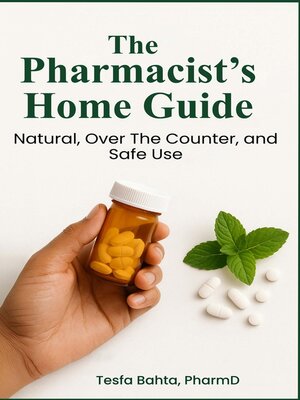
Sign up to save your library
With an OverDrive account, you can save your favorite libraries for at-a-glance information about availability. Find out more about OverDrive accounts.
Find this title in Libby, the library reading app by OverDrive.



Search for a digital library with this title
Title found at these libraries:
| Library Name | Distance |
|---|---|
| Loading... |
As a pharmacist, I've spent years standing at the crossroads of relief and risk. Whether prescribed, purchased off the shelf, or labeled "natural," medications carry a quiet duality. They can mend a fever, steady a heartbeat, or soothe chronic pain; even familiar remedies harbor shadows. A child's cough syrup might ease breathing but dull alertness; herbal teas can calm nerves yet clash with blood thinners. These nuances live in every home, tucked into bathroom cabinets and kitchen pantries, waiting to be understood. This guide grew from those everyday realities. It's for parents weighing allergy medications before school mornings, caregivers sorting pillboxes at dawn, and anyone staring at a supplement label wondering if this is truly safe. My aim isn't to preach extremes, modern medicine versus nature, but to help you navigate the middle ground. You'll find research-backed insights on antibiotics alongside evidence-based uses for ginger or chamomile because healing isn't about categories. It's about clarity. Yet knowledge has its limits. Let me pause here: these pages can't replace the pharmacist who knows your medical history or the doctor monitoring your child's growth. A neighbor's miracle supplement could strain your liver; a "harmless" painkiller might bleed into a chronic condition. However, you can bring these ideas up with your healthcare provider and get their opinion. Your safety lies in those conversations. To build this resource, I learned on decades of clinical studies, federal health bulletins, and trusted medical databases, the same sources guiding hospital decisions. But I also listened to exhausted parents in midnight pharmacy lines, retirees wary of mixing pills, and teens learning self-care. Wisdom lives there, too, in the friction between textbooks and lived experience. Think of this book as a flashlight, not a map. It won't dictate choices but illuminate paths and ways to question labels, spot red flags, and balance hope with caution. Healing at home isn't just about what you take; it's about seeing the full story behind each dose. Let's explore this complex field together, one careful, informed step at a time







